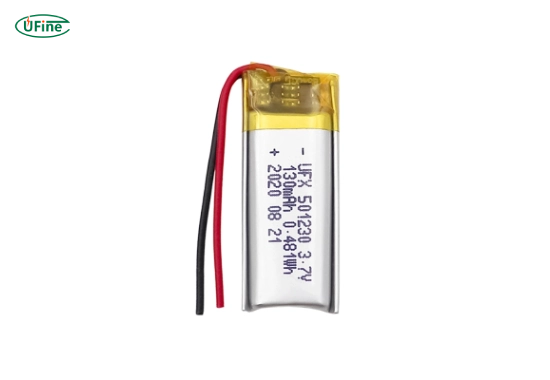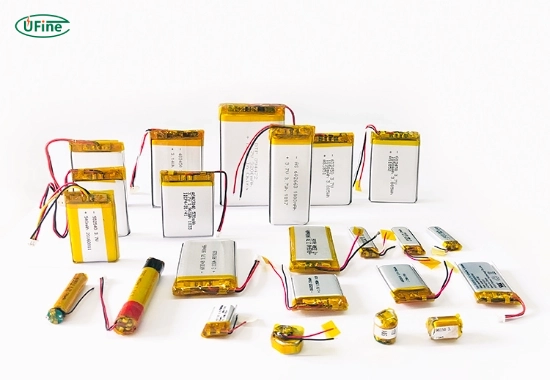
- Part 1. What is a tiny battery and why does the size matter?
- Part 2. Tiny battery size chart: How to read and understand it
- Part 3. Common tiny battery sizes and their uses
- Part 4. How to choose the right tiny battery for your device?
- Part 5. Battery chemistry explained: Alkaline, silver oxide, lithium, and more
- Part 6. Tiny lithium-ion vs lithium-polymer batteries: What's the difference?
- Part 7. How long do tiny batteries last in real-world use?
- Part 8. Are rechargeable tiny batteries better for your device?
- Part 9. How to safely store and handle small batteries?
- Part 10. Advanced tips for finding the perfect tiny battery size
- Part 11. FAQs about tiny battery size and selection
When selecting a small battery size for your miniature device, accuracy is crucial. Whether you’re powering a smart sensor, a hearing aid, or a fitness tracker, choosing the right battery ensures your device runs efficiently and safely. But how do you know which one is best?
In this comprehensive guide, we’ll explore how to find the perfect tiny battery by considering size charts, battery codes, chemistry types, and performance factors.
Part 1. What is a tiny battery and why does the size matter?
A tiny battery is a compact energy source designed for small, portable electronic devices. Unlike standard AA or AAA batteries, tiny batteries are often coin-shaped or slim cylindrical cells that fit precisely into miniature electronics.
Battery size matters because:
- It determines if the battery fits into the compartment
- It affects how much energy the battery can store
- It influences the device’s performance and runtime
Using the wrong size can result in poor contact, weak output, or even damage to the device.
Part 2. Tiny battery size chart: How to read and understand it
The tiny battery size chart is a reference tool that helps you pick a battery based on its size, voltage, and type. Most batteries use a code printed on their surface to indicate their specifications.
- CR2032
- C = Lithium chemistry
- R = Round shape
- 20 = 20 millimeters in diameter
- 32 = 3.2 millimeters in thickness
- LR44
- L = Alkaline chemistry
- R = Round
- 44 = 11.6 mm diameter, 5.4 mm height
Always cross-reference the code with a battery size chart to confirm compatibility.
Part 3. Common tiny battery sizes and their uses
Understanding popular tiny battery sizes helps when replacing or selecting a cell for your device. Below is a helpful table for quick comparison.
| Battery Code | Size (mm) | Voltage | Chemistry | Applications |
|---|---|---|---|---|
| CR2032 | 20×3.2 | 3V | Lithium | Watches, key fobs, remotes |
| LR44 | 11.6×5.4 | 1.5V | Alkaline | Toys, thermometers, calculators |
| SR626SW | 6.8×2.6 | 1.55V | Silver Oxide | Watches, medical devices |
| 102540 | 10×25 | 3.7V | Lithium-ion | Fitness trackers, GPS |
| 501230 | 5×12 | 3.7V | Lithium-polymer | Wireless earbuds, wearables |
| Size 10 | 5.8×3.6 | 1.4V | Zinc-air | Hearing aids |
Choose a battery not just by size, but also by voltage and chemistry to ensure optimal performance.
Part 4. How to choose the right tiny battery for your device?
Selecting the correct tiny battery size is more than just matching dimensions. Here’s a step-by-step guide:
- Check the old battery’s label for code and chemistry
- Measure the compartment if no battery is present
- Compare voltage requirements of your device
- Check the battery chemistry for compatibility
- Use device manuals or manufacturer specs
Tip: Never substitute a battery with a different chemistry unless it’s listed as interchangeable. For example, replacing lithium with alkaline may result in lower performance.
Part 5. Battery chemistry explained: Alkaline, silver oxide, lithium, and more
Choosing the right tiny battery chemistry affects how long the battery lasts, how consistent the voltage is, and how well it performs under load.
Common chemistries:
- Alkaline: Inexpensive and widely available, but shorter lifespan
- Silver Oxide: Stable voltage, ideal for watches and precision electronics
- Lithium (non-rechargeable): Long shelf life, high energy density
- Zinc-Air: Used in hearing aids, activated by air exposure
- Lithium-ion (Rechargeable): High-capacity, reusable with consistent output
- Lithium-polymer (Rechargeable): Thin, flexible design, used in ultra-compact devices
Each chemistry has its pros and cons, so select the one that matches your device’s demands.
Part 6. Tiny lithium-ion vs lithium-polymer batteries: What’s the difference?
Both lithium-ion and lithium-polymer batteries are rechargeable and used in compact electronics. But they are not the same.
Lithium-ion (Li-ion):
- Uses a liquid electrolyte
- Higher energy density
- Longer cycle life
- Rigid structure
- Slightly heavier
- Common in fitness trackers, GPS units, small cameras
Lithium-polymer (Li-po):
- Uses a gel-like electrolyte
- Lightweight and flexible
- Can be made ultra-thin
- Slightly lower energy density
- More expensive
- Ideal for wireless earbuds, slim wearables, micro drones
Which is better?
If your device needs a slim, flexible battery, lithium-polymer is the better choice. For higher capacity and longevity, lithium-ion is ideal.
Part 7. How long do tiny batteries last in real-world use?
Battery life depends on:
- Device power consumption
- Battery capacity in mAh
- Frequency of use
- Environmental conditions
Real-world examples:
- CR2032 in a watch: 2 to 4 years
- LR44 in a digital thermometer: 6 months to 1 year
- Zinc-air in hearing aids: 3 to 10 days
- Lithium-ion in a fitness tracker: 1 to 2 years of recharge cycles
Tip: Always replace all batteries in a multi-cell device at the same time to prevent imbalance.
Part 8. Are rechargeable tiny batteries better for your device?
Rechargeable tiny batteries are often the smarter long-term choice, especially for high-drain or frequently used devices.
Pros:
- Lower long-term cost
- Environmentally friendly
- Convenient charging
- Consistent performance
Cons:
- Higher upfront cost
- Requires proper chargers
- Limited charge cycles
Use rechargeable models in devices like earbuds, wearables, and wireless mice. Avoid them in emergency or rarely used devices where self-discharge can be an issue.
Part 9. How to safely store and handle small batteries?
Tiny batteries can pose safety risks if not handled properly. Here’s how to store them:
- Keep away from children and pets
- Store in a cool, dry place
- Use plastic cases or original packaging
- Avoid metal contact to prevent short-circuits
- Recycle or dispose of used batteries responsibly
Never throw batteries in the trash. Most communities offer battery recycling stations.
Part 10. Advanced tips for finding the perfect tiny battery size
For complex or custom gadgets, battery selection becomes more technical. Here are expert tips:
- Use a digital caliper to measure exact diameter and thickness
- Check discharge curve graphs for voltage stability
- Consider temperature ratings for extreme environments
- Look at internal resistance for high-drain applications
- Compare mAh ratings across similar sizes for better runtime
If you’re building or modifying a device, talk to a battery specialist to ensure safe and efficient power delivery.
Part 11. FAQs about tiny battery size and selection
What is the most common tiny battery for watches?
The SR626SW (also called 377) is one of the most common batteries for analog watches. It offers stable voltage and long life.
Can I use a lithium battery instead of an alkaline?
Only if the voltage and size match exactly. Lithium batteries typically have higher voltage and may damage devices not designed for them.
What does the “CR” in CR2032 mean?
“CR” indicates a lithium coin cell with a round shape. Numbers for size follow it: 2032 means 20mm diameter and 3.2mm thickness.
Are LR44 and AG13 the same?
Yes, LR44, AG13, A76, and 357 are compatible designations with slightly different chemistries or branding.
How do I identify a lithium-polymer battery?
Look for a flat, rectangular shape with soft outer casing. Labels often include 3.7V and a model code like 501230 or LP503035.
Related Tags:
More Articles

Battery Load Test: A Comprehensive Guide
Step-by-step battery load test guide for car, solar & industrial use. Learn how to load test a battery, interpret voltage charts, and avoid common mistakes.
The Comprehensive Guide to Battery Balancing and Battery Balancer
Discover how battery balancers improve lithium battery performance, lifespan, and safety. Learn types, functions, and tips to choose the right balancer.
What Is the Best Voltage for a Chainsaw Battery?
Compare 12V-80V chainsaw batteries for light pruning, medium firewood, and professional cutting. See best battery chainsaw with runtime charts and safety tips.
Lithium VS. Alkaline Batteries: A Comprehensive Comparison
Lithium batteries last 3–7× longer than alkaline and perform better in cold weather. Compare lifespan, cost, safety, and best uses to choose the right battery.
Comparing Lithium-Sulfur and Lithium-Ion Batteries: Which is Right for You?
Compare lithium-sulfur (Li-S) and lithium-ion batteries on energy, lifespan, cost, safety, and applications. Best choice for drones, EVs, and electronics.




